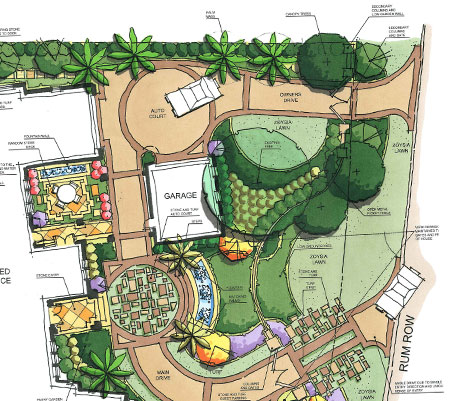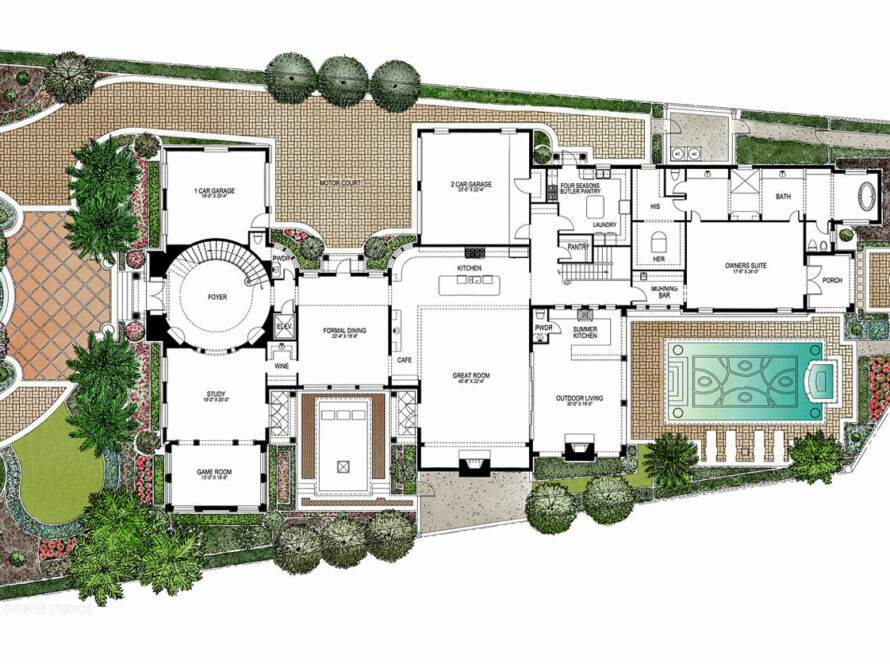Landscape rendering is a process by which an artist creates a visualization of a proposed landscape, typically as a three-dimensional image. By understanding the lay of the land, the artist can create renderings that are more accurate and provide a better overall blueprint for construction. In this blog post, we will introduce you to the basics of landscape rendering and help you understand what it can do for your construction project.
What is a landscape plan rendering?
A landscape plan rendering is an image that shows the layout of a property, all features and elevations, in one picture. Generally, a landscape planner will work with the client to create a plan that reflects their vision for the property. After the plan is created, an artist or designer can then produce a rendering of the plan to show how it would look on the property. A landscape rendering can be used as a selling tool, showing potential buyers what they could have if they were to purchase the property.
Landscape plan renderings can be extremely helpful in helping clients make informed decisions about purchasing or leasing a property. By understanding what the property will look like, potential buyers can feel more confident in their decision.

Benefits of a landscape plan rendering
There are many benefits to having a landscape rendering done. A rendering can show the potential layout of your landscaping, and how various features might be configured or integrated. This can help you get a better idea of how your yard will look and how much work is required to complete it. Additionally, a rendering can serve as an estimate of what your final landscaping will cost.
A rendering can also help you identify potential problems with your current landscaping. If you have any concerns about the layout or design of your yard, a rendering can give you a detailed overview of how everything will look and what needs to be addressed. By identifying potential issues upfront, you can avoid having to deal with them later on in the process.

How to create a landscape plan rendering?
Landscape planning renders can help you visualize the results of your landscape design decisions. To create a good rendering, it is important to have an understanding of how landscape planners use certain modeling tools to create 3D representations of landscapes. Landscape rendering programs like SketchUp enable landscape planners to model natural and artificial features and view them in a variety of different lighting conditions.
Once you have mastered the basics of SketchUp, you can start rendering landscapes with more realism. To produce high-quality renderings, it is important to model accurately and realistically using orthographic views and accurate dimensions. Once your models are complete, you can use software like Photoshop or Inkscape to create finished renderings that look realistic from any angle.
If you are interested in learning more about landscape rendering, we recommend checking out some of the following resources:
- How to Create a Landscape Rendering in SketchUp?
- The 8 Best Adobe Photoshop Tutorials for Landscape Designers?
What to consider when creating a landscape plan rendering?
When creating a landscape plan rendering, there are many factors to consider. Below are a few key considerations:
- The layout of the property: Will the rendering show the entire scope of the property, or will it focus on specific areas?
- The size and shape of the property: How large is it? What shape is it? Will sections be cut off, or will all of the land be included?
- The terrain: Are there any obvious terrain features that need to be taken into account (like a river running through the property), or does the render simply show an empty field?
- The environment: What kind of weather does the area typically experience? Is there a significant climate difference between different sections of the property?
- Inhabitants: Are any people/animals living on or near the property that should be considered in regards to design choices (like building placement)?- aesthetics: Will the property be used for any commercial or recreational purposes? Are there any specific features that the render should reflect (like a waterfall)?

Conclusion
Hello readers, in this article I am going to share with you one of my favorite landscape planning rendering techniques – introduction. This type of rendering is perfect when you want to introduce a subject into an existing scene without having to recreate the entire environment around it. By using simple shapes and colors, you can create a powerful impact on the viewer’s mind without doing too much work. If you’re interested in learning more about landscape rendering techniques, be sure to check out some of our other articles on the topic!





